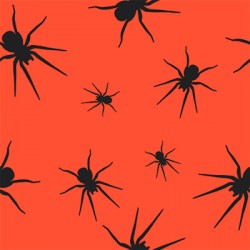Halloween Affiliate Tips: Creepy Web Crawlers
27-10-2016

Halloween is around the corner and we thought we’d write an entry about a certain creepy crawler that crawls on your pages daily without you even noticing: web spiders!
Affiliate Tips: The Critter of Many Names
They go by many names, including web spiders, web crawlers, web robots, Googlebots, or simply, crawlers. They’re built to roam your website and inhabit moth-eaten web pages in order to prey on keywords and hyperlinks. They are created to search, identify, and categorise. In addition, when you make new changes on your web page, crawlers will be the ones to eventually detect it and report the changes to their respective creators.
These crawlers get around by following links, images, and content that lead to your page. Your URL and keywords will be the bait that leaves behind your scent all over the web, if you distribute them wisely. If your URL hasn’t been left on other websites or social networks, these crawlers may take a longer time to discover your page—especially when it’s a new website. Without proper bait, web crawlers will have a more difficult time detecting your scent and indexing your website.
Affiliate Tips: Trick or Treat?
Should you be afraid that Google, Bing, Yahoo, and every other search engine employ these crawlers on your web pages? Not if you want your page to start ranking! On the contrary, you should be looking to bait as much of them as possible if you want your website to perform well on search engines. Remember, these web crawlers aren’t out to seek and destroy; they’re friendly robots that will help you get the ranking you deserve!
Affiliate Tips: How to Catch Them
So, now that we’re clear on the purpose of these nearly invisible robots, here’s how you can catch them if you want your page to get better search results.
- Include Keywords in Meta Tags: We’re not talking about stuffing keywords, which could get the webmaster in trouble if the practice is abused. We’re referring to naturally including relevant keywords in your titles, headlines, subheads, and meta descriptions. Your page title and descriptions should represent the body content of your website well. In addition, to check the relevancy between the site title/descriptions and body content, use a free SEO analyser to help you improve the overall SEO “health” of your site. It’s best practice to put the short descriptions before the name of your website when creating a site title, such as “Short-Term Loan Leads Affiliate Network – T DOT UK.” This is not a major deal, but crawlers seem to slightly prefer websites in this format more than others. The short description that shows up below the title usually shows around 130-160 characters, so use this slot of information to let your audience know exactly what your website is about. It’s also important to know that meta descriptions are especially enticing to web crawlers, who use them to categorise and rank your website.
- Write Quality Content: What’s one of the best ways to attract these engine bots and stimulate crawling? It’s by writing plenty of quality, keyword rich content, sprinkled with natural hyperlinks throughout. It’s certainly not mandatory that you have pages and pages of content on your website, higher ranking sites are more or less like “chapter books” rather than simple and thin “picture books.” If you want to gain traffic by way of organic searches, then it would be best to create more quality content to build credibility with your audience and get indexed quicker as a result. You can also use your blog to build links for yourself, although this should be done naturally and not stuffed with links. We recommend sticking to four or five links max per post.
- Get Linked by Indexed Pages: If your website is new, then using aged domains and social platforms to link to your website will help the web crawlers discover your page faster. They travel through links, so the more links you have leading to your website, the easier it will be for them to find you!
- Submit a Sitemap: So, you’ve developed enough keyword-rich content and link structures, it’s time to submit a sitemap to all the major search engines! They’re the ones after all that employ the web crawlers! You can submit a sitemap for Google here. If your content has been optimised and your keyword competitiveness is relatively low, then you should start seeing your website on the first few pages of search results within a few days!
T DOT UK wishes you all the best with catching these crawlers this season!
Disclosure: This article is for informational purposes only and should not be construed as business, financial, or legal advice. T.UK cannot guarantee the accuracy of any information found on third-party websites.


